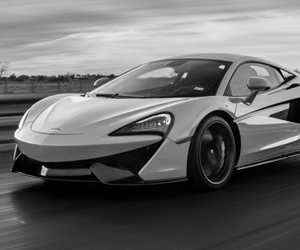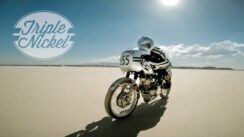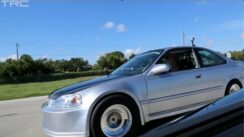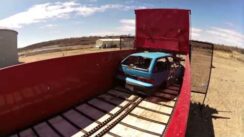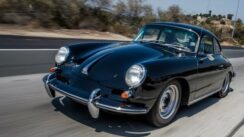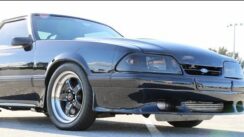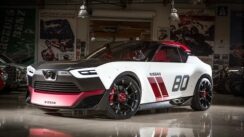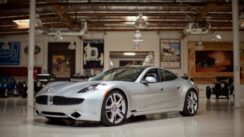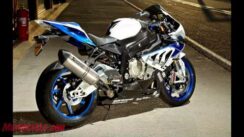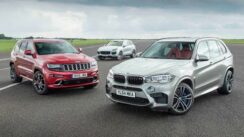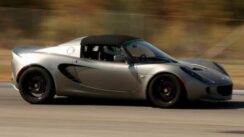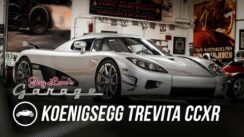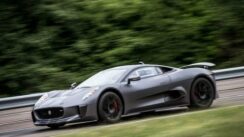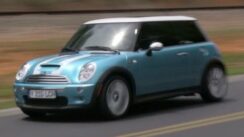Acura NSX Review | Does it live up to the hype?

Like Air Jordan Sneakers, the iPhone 7 or the latest installment of “Star Wars,” the 2017 Acura NSX has been saddled with an unfair burden since the moment it was conceived. That burden is the legacy of what came before it: a car resolute in its uniqueness, one that has carved out a special niche in the purist community as one of the greatest ever.
Old crushes may die hard, but market forces wait for no design team. The 10-year wait that Honda/Acura made the world endure was enough to lead some to thinking NSX 2.0 wasn’t coming at all. Patience paid off, and in 2017 we can finally experience Acura’s unique angle on the supercar format for a second time. Does it live up to expectations?
Not Harvey Keitel’s Acura
The 2017 NSX makes no attempt to be the austere, analog surgeon’s knife that made 16-year-olds scratch their heads in confusion when it drove away in “Pulp Fiction.” This, folks, is not a sequel. This is a reboot.
It certainly looks all-new. Despite packing on some pounds thanks to all the technology, the NSX hasn’t suffered from the bloat that seems unavoidable at brands like BMW. Its combination of angular focal points and elegant curves leaves little wonder why Marvel chose this to be Tony Stark’s personal hot rod. There are clear connections to the more mainstream Acura lineup here, and they don’t detract from the NSX’s sex appeal. Well done, Acura.
The design language holds up inside, and Acura has stuck with the pedestrian-but-practical approach to doors. They open horizontally and it’s really easy to get in. What a concept! Visibility is exceptional, as are ergonomics. Supple leather on seats and touch surfaces is complimented by alcantara and carbon fiber, and even if the switchgear doesn’t feel as bespoke as something from a Lamborghini, it asserts the level of restrained class NSX buyers want.
Tech for the Supercar Masses
In 1990, the use of four-wheel drive alone was enough to make a car stand out. Not only does the new NSX use what could be the world’s most advanced performance all-wheel-drive system, it couples three electric motors — one for the rear end and one for each front wheel — to a 3.5 liter V6 that’s been twin-turbocharged to the tune of 500 horsepower. The net system output is 573 horsepower and 476 pound-feet of torque.
This happy meal of high-speed tech seems the farthest thing from the simplistic layout of the first car, but you must consider what the NSX is up against today.
Hybrid-drive systems are employed on hypercars like the 918 and McLaren P1, Ferrari is using a race-derived KERS system to provide Mario-Kart style power boosts in the LaFerrari, and the next BMW I8 promises to be an all-electric speed-demon. The system in the NSX is arguably more advanced than what you find in the holy trinity from Maranello, Stuttgart and Woking, but Acura is making it available at a fraction of what those cars cost, in a segment where they don’t compete.
Even if they’ve done it in a completely different manner than with the first car, practicality is what Acura has delivered here. Increasingly stringent emissions standards will undoubtedly force all performance cars to eventually adapt turbocharging and/or hybridization. What we have in the NSX is tomorrow’s 911-killer, today.
The New School of Speed
The only question, then, is whether this killer is up for a fight. Finding out means setting the NSX’s drive mode dial to track. The change is transformative. The NSX’s gauges change, as do settings for the car’s magnetorheological dampers, center differential and traction control.
What makes this car’s all-wheel-drive system so unique is the role the front motors play in steering input. In simplified terms, the car can actually increase torque to pull a wheel through a corner, or do the opposite to assist you getting the nose around. The result is that the understeer the car can exhibit when pushed in other settings is eliminated. It doesn’t turn the Acura NSX into a hoonigan’s car, however.
In track mode, the NSX is surgically precise. The tactile feedback is something different from what the first-generation car delivered, but the capabilities are much, much higher. This is hero-car stuff. It allows perfectly apexed corners exited with just a hint of power oversteer that neatly tucks in as you select the best line for your next approach.
You don’t buy an NSX to do battle with regular 911s. You buy an NSX to surprise the heck out of your friend with a turbo, the same way the first-generation car did to Ferrari’s 348.
Win on Sunday, Commute for the Rest of the Week
Some will argue that the amount of electronic wizardry involved in doing it makes setting ridiculous lap times in the NSX less cool, but set them it will. When you’re finished setting them, you can return the NSX to docile mode and enjoy a serene ride home in your well-appointed interior with your favorite tunes cranking from the premium stereo.
Honda/Acura has been expressly open about the fact that while the NSX is a stellar performer, it’s not a numbers car. There are quicker cars 0-60, yes, but what the NSX will be, and has always been, is wonderful to own. It offers a glimpse of tomorrow’s supercar, in a package that can adapt to nearly any situation. Because it’s a Honda product, it will likely never break.
If this isn’t the offspring of 1990’s NSX, it is most certainly that car’s wealthy web-developer millennial grandkid.

































































